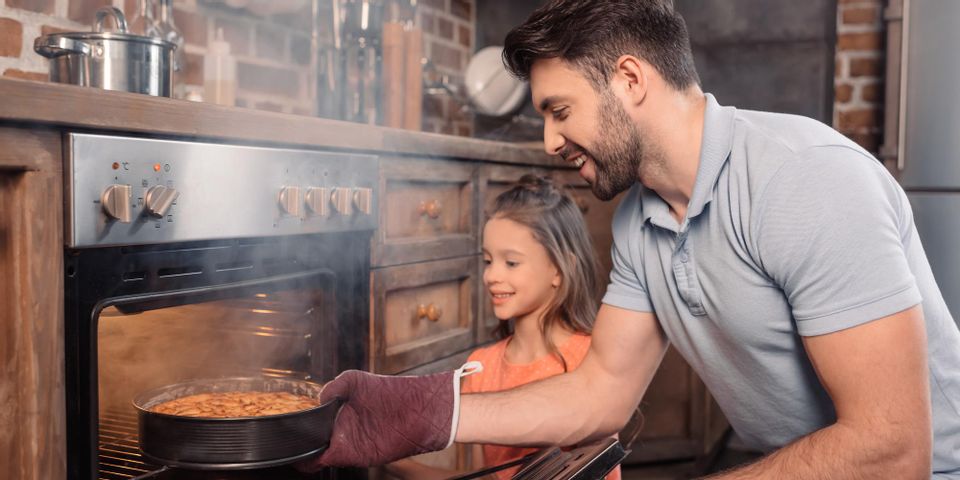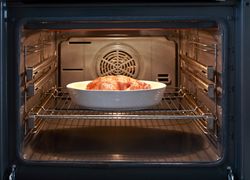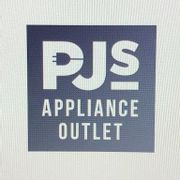
Whether you’re looking to replace an old oven or install one in a newly built home, choose a model that suits your lifestyle. Ask yourself if you would prefer a freestanding appliance with a cooktop or a high-end wall-mounted unit. Then consider how it heats, whether conventionally or with convection or steam. Here’s what you need to know about the pros and cons of each oven-heating type.
3 Heating Methods of Home Ovens
1. Conventional
Conventional ovens are either gas or electric and are available in multitude of finishes, colors, and price ranges. They have top and bottom sources of heat so that cooks can bake, roast, and broil.
2. Convection
Convection overs are like conventional ones but have a fan that distributes the air within the heating chamber. The fanning of the heat around food helps it cook more quickly and at lower temperatures than conventionally cooked food. Cooks praise the predictable results they get with convectional ovens and the easy browning. Although they’re cheaper than conventional ovens to operate, they’re more expensive to purchase.
 3. Steam
3. Steam
Steam overs impress both professional chefs and nutritionists. Like convection ovens, they have internal fans, but they also apply steam in the cooking process. The water is stored in a reservoir inside the appliance or supplied by hookup with the plumbing. They are fast, precise, and produce even browning. Bakers prefer steam baking because they can bake at lower temperatures, and the moisture in steam helps trap in nutrients.
If you’re looking for a new oven or other appliance at a fantastic price, go to PJ’s Appliance Outlet in Minneapolis, MN. They have hundreds of appliances in inventory—refrigerators, stoves, washers, dryers, and dishwashers. With excellent customer service and deals you won’t find anywhere else, there’s no reason not to stop by their large showroom. Visit them online to view current selections, or call (763) 657-0979 to speak with a representative today.
About the Business
Have a question? Ask the experts!
Send your question

